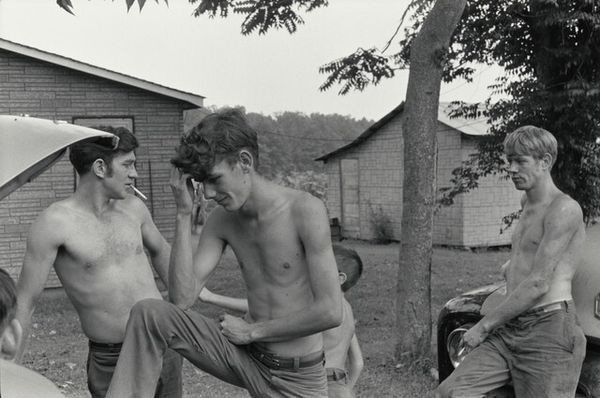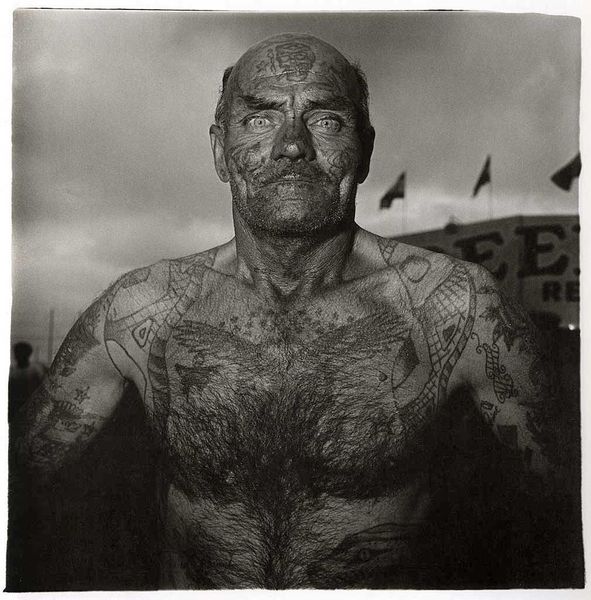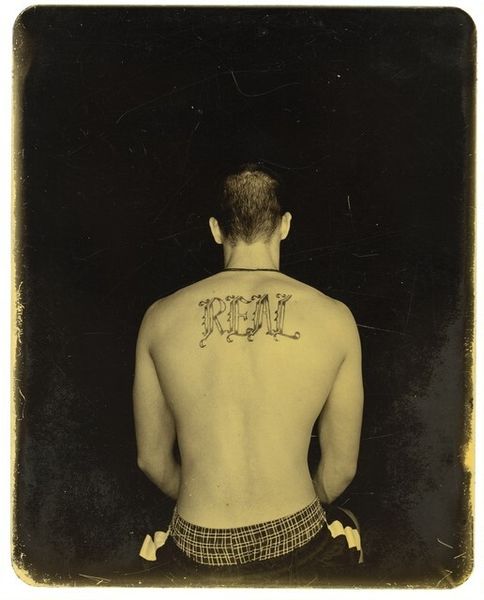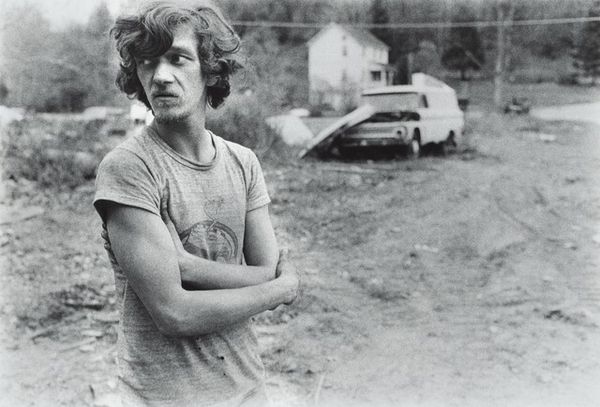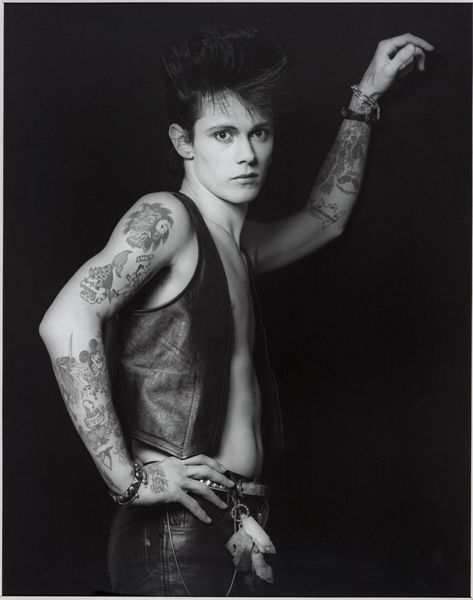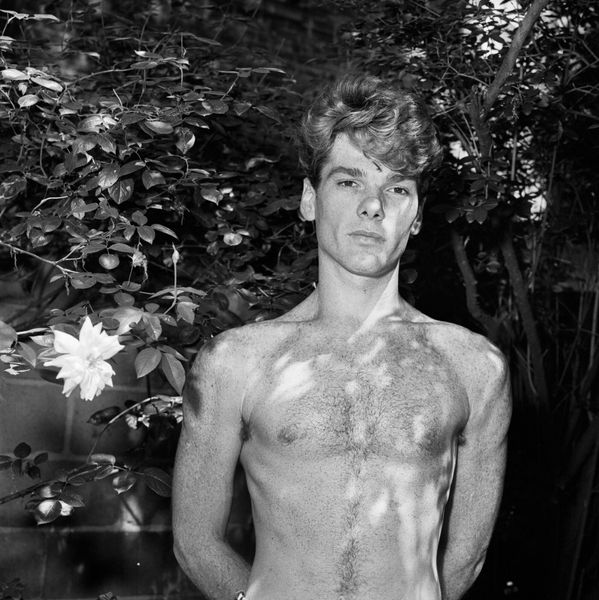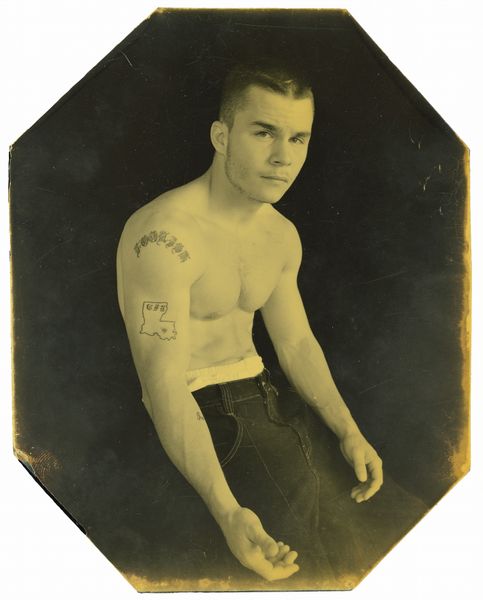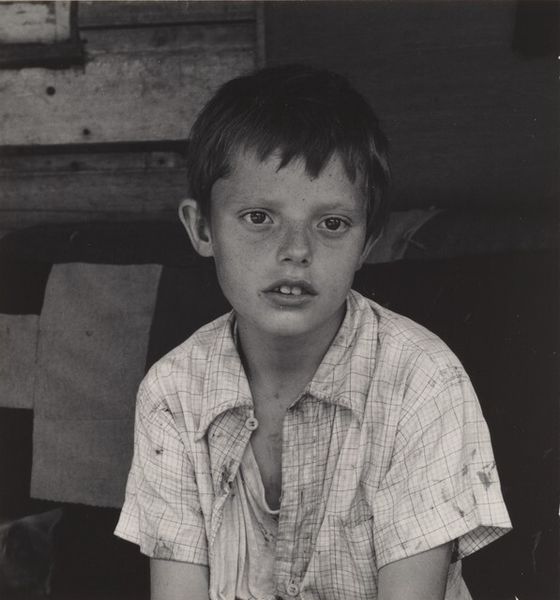
photography
#
portrait
#
cool tone monochrome
#
portrait image
#
portrait
#
centre frame
#
portrait subject
#
black and white format
#
street-photography
#
photography
#
portrait reference
#
black and white
#
single portrait
#
hero shot
#
realism
Dimensions: image: 21.5 × 14.6 cm (8 7/16 × 5 3/4 in.) sheet: 25.08 × 20.32 cm (9 7/8 × 8 in.)
Copyright: National Gallery of Art: CC0 1.0
Editor: This is Eva Rubinstein's "Portrait of Tattooed Man" from the 1970s, a black and white photograph. It's striking how raw and direct the subject is. What can you tell me about this work? Curator: This piece brings up interesting questions about representation and labor. The tattoos, the clothing, the direct gaze – these are all material signifiers that point to a specific social and economic context. Where and how do you imagine the image was created, given the man’s tattoos, clothes, and what appears to be a dilapidated structure in the background? Editor: It looks like an outdoor setting, maybe rural? His tattoos seem… amateur, like they might have been done by hand, perhaps even by himself or a friend? Curator: Exactly! The "handmade" quality of the tattoos versus what we might think of as today’s slick tattoo culture immediately raises questions about access, class, and even skill as a commodity. Rubinstein has framed this person and this scene with precision using readily available, relatively affordable film, ink and a means of developing the images, hasn’t she? Do you see how the artistic choices – the stark black and white, the unadorned background, the subject’s unidealized body – avoid romanticizing the subject and instead encourage us to consider the material conditions of his life? Editor: That's fascinating. It really makes you think about the process of making the image as well. I was initially just drawn to the composition, but now I'm seeing how all those material details contribute to a larger statement about society. Curator: Precisely. We see how seemingly simple artistic decisions reflect the complex interplay of social forces. The value then lies in understanding those relationships between making art, representing individuals, and impacting our understanding of our social and economic structures. Editor: This was so insightful, I appreciate you guiding my thinking toward production and larger cultural questions.
Comments
No comments
Be the first to comment and join the conversation on the ultimate creative platform.
